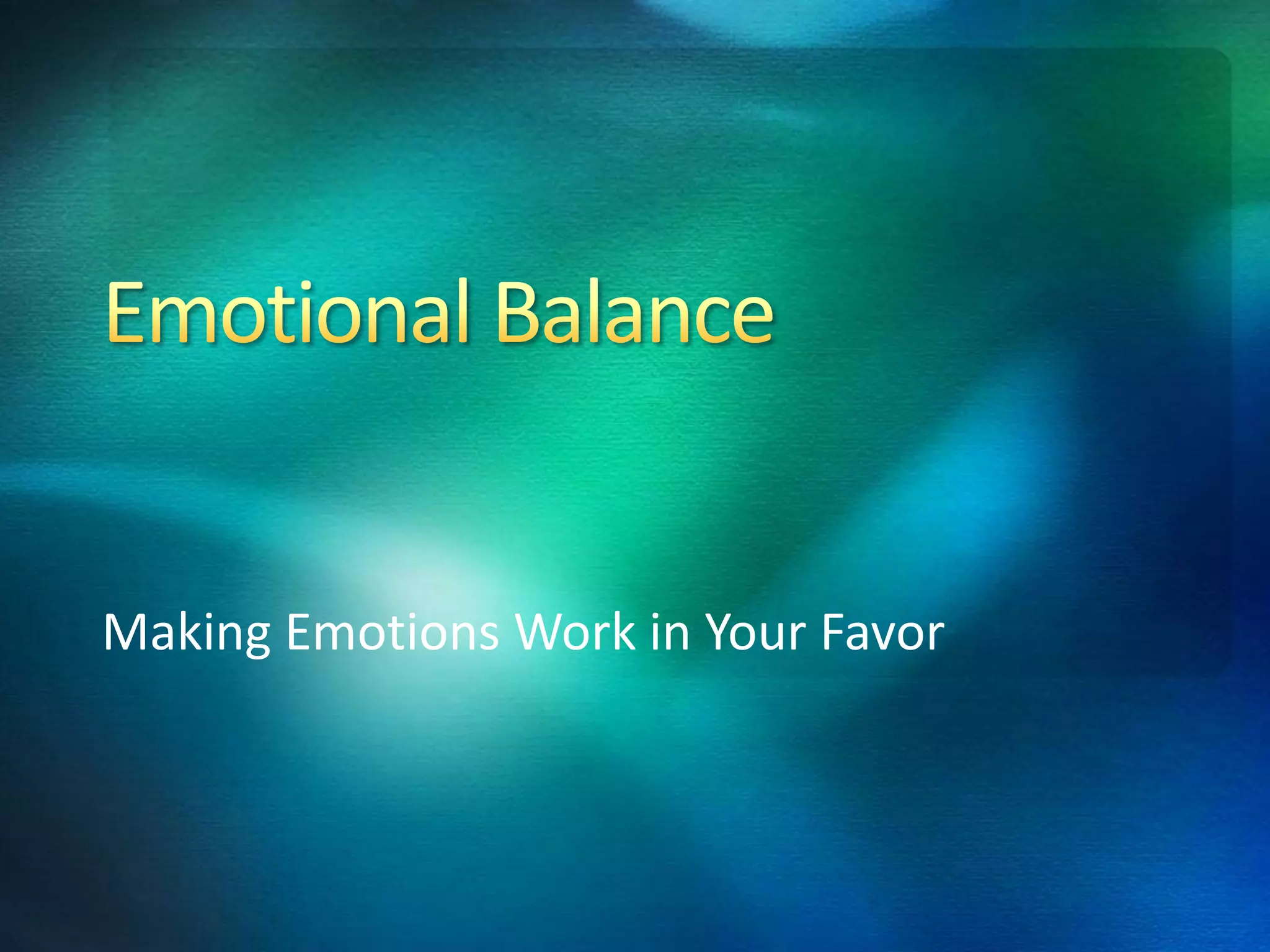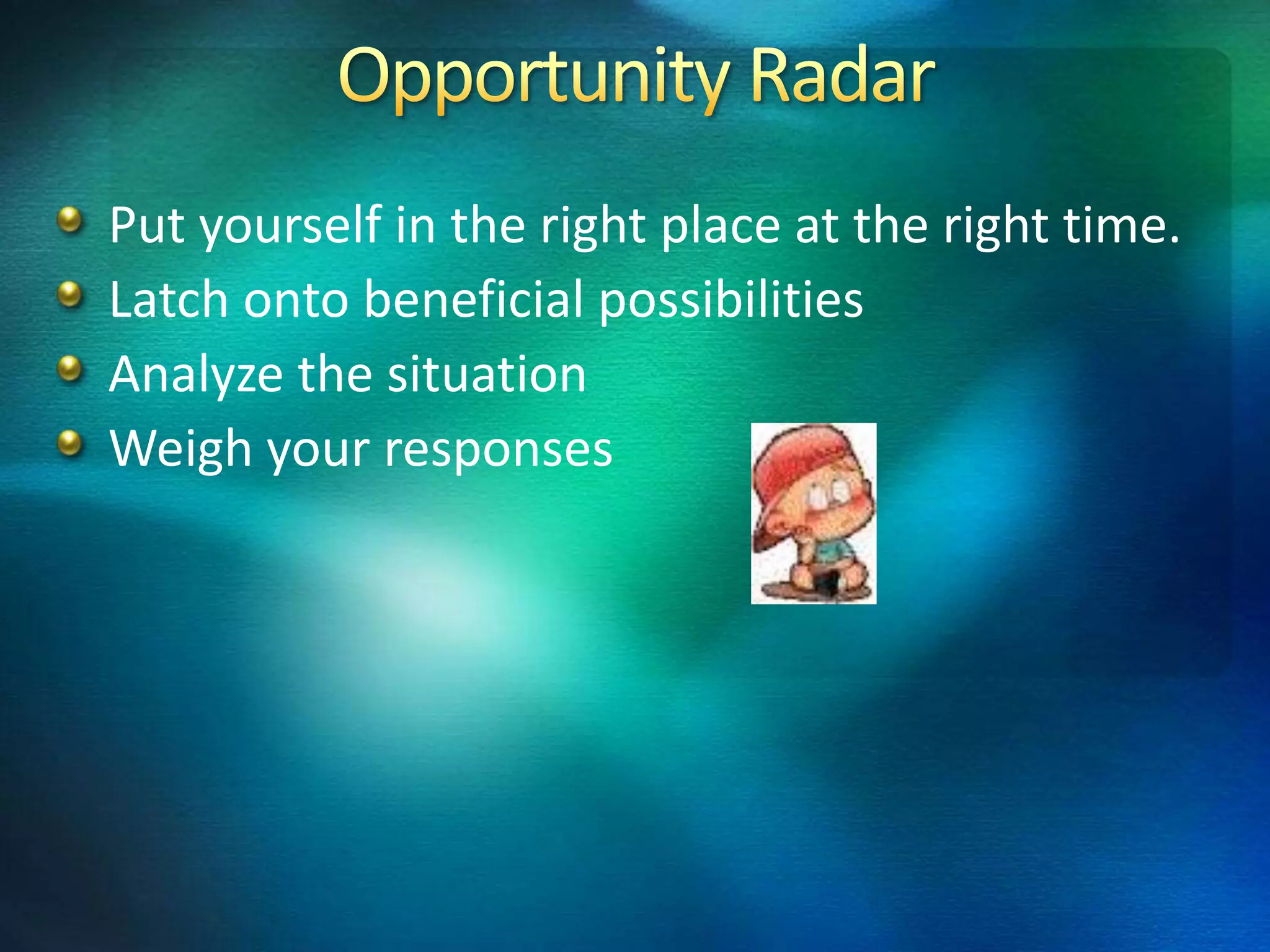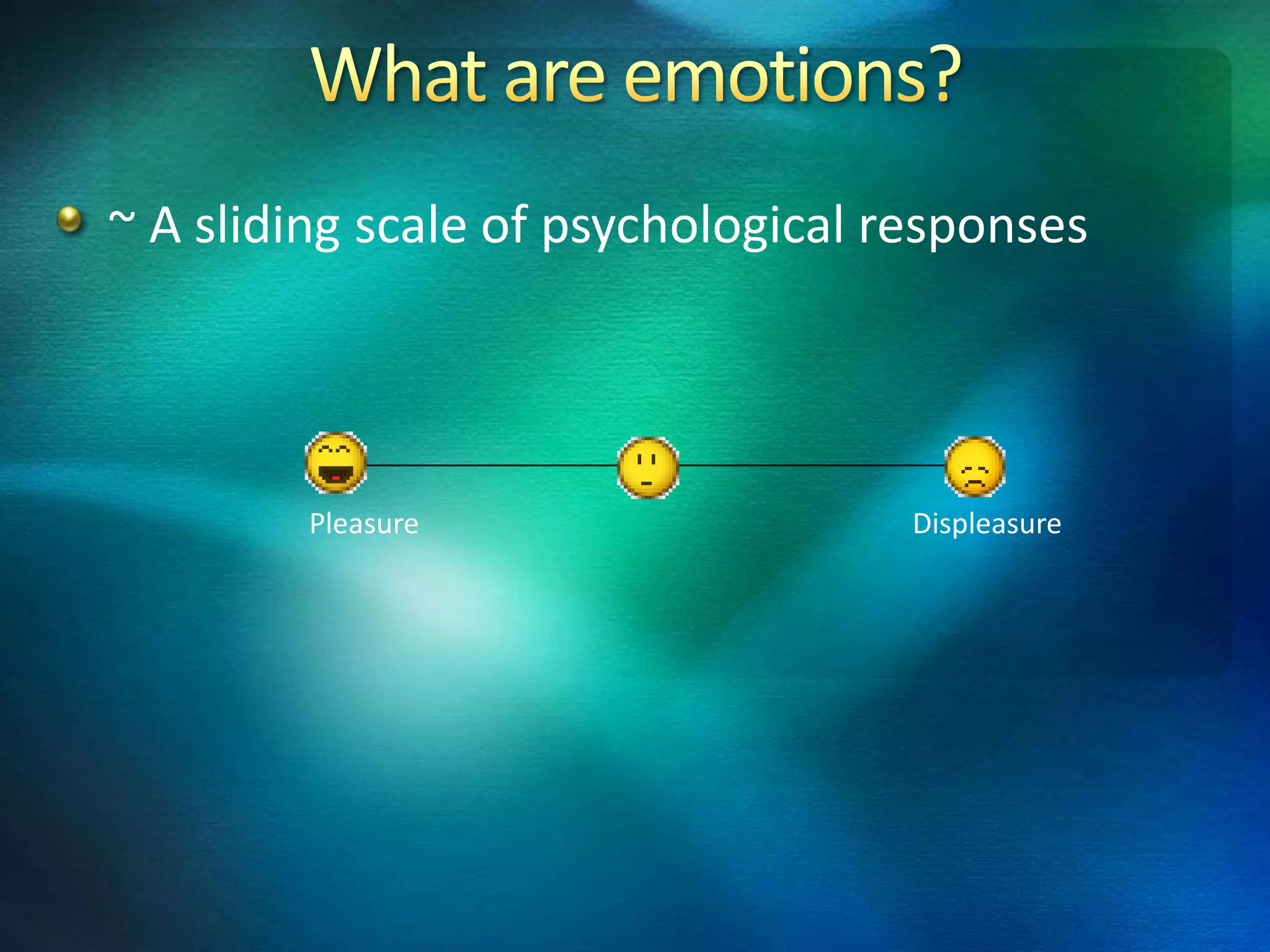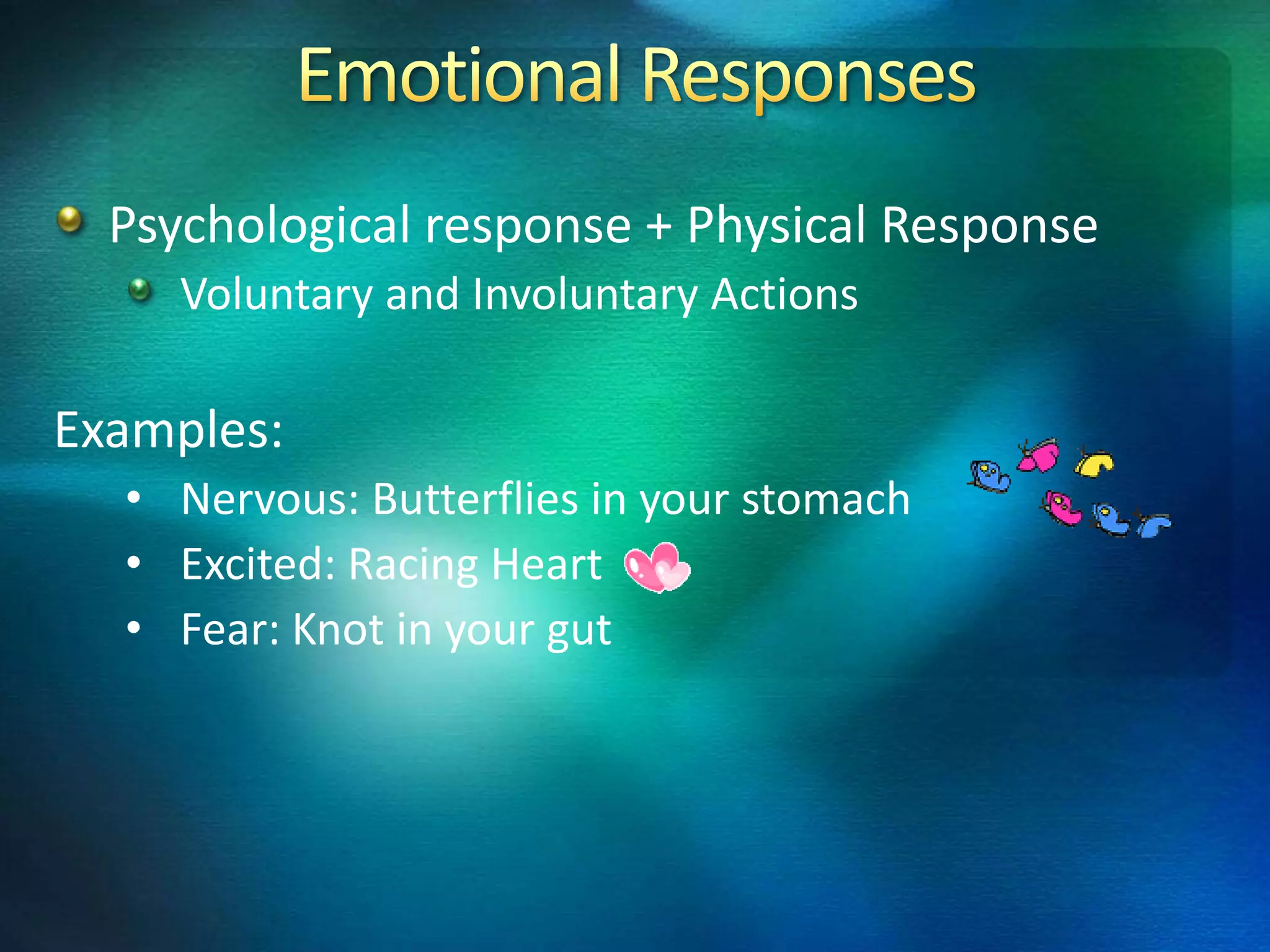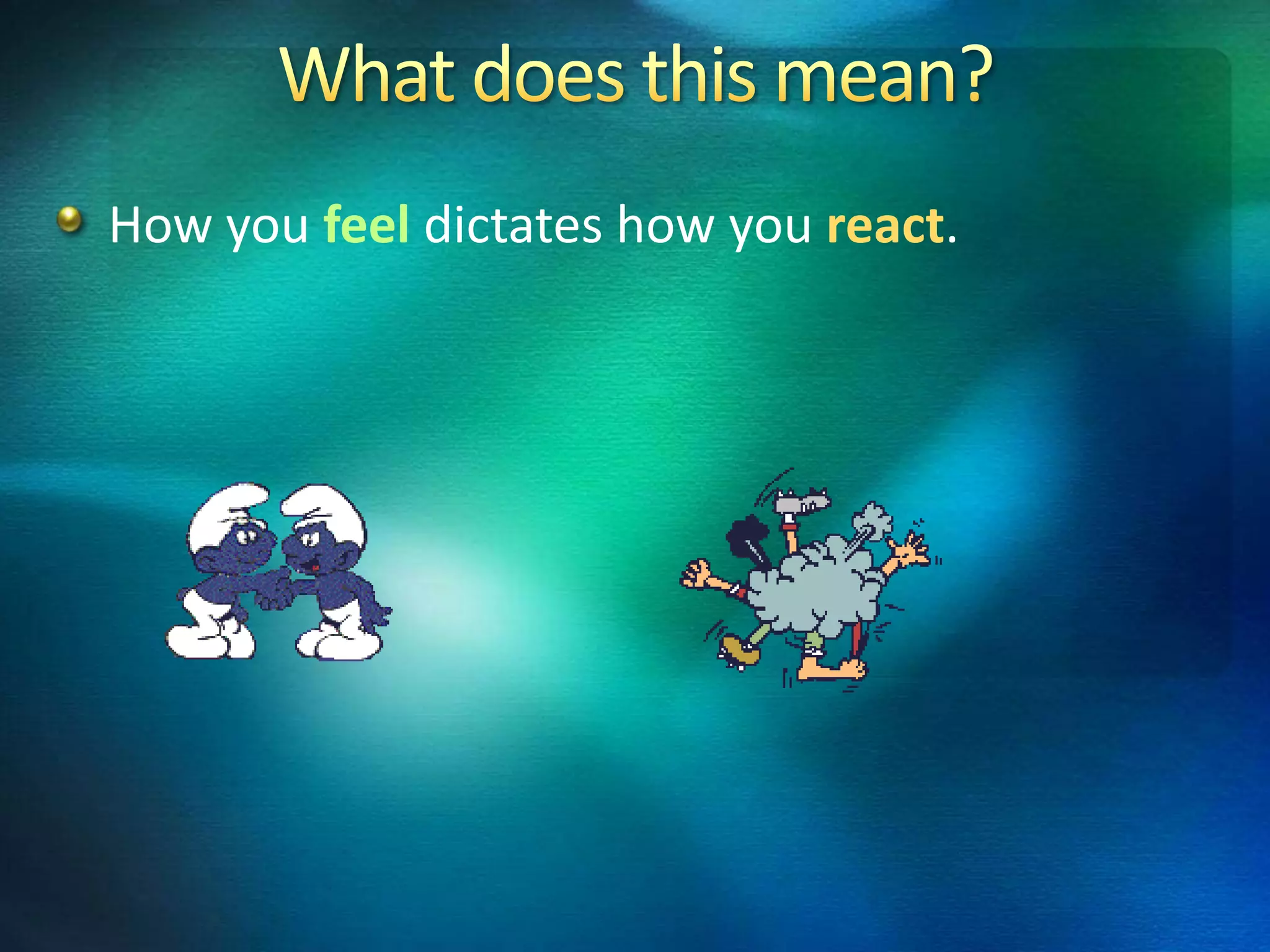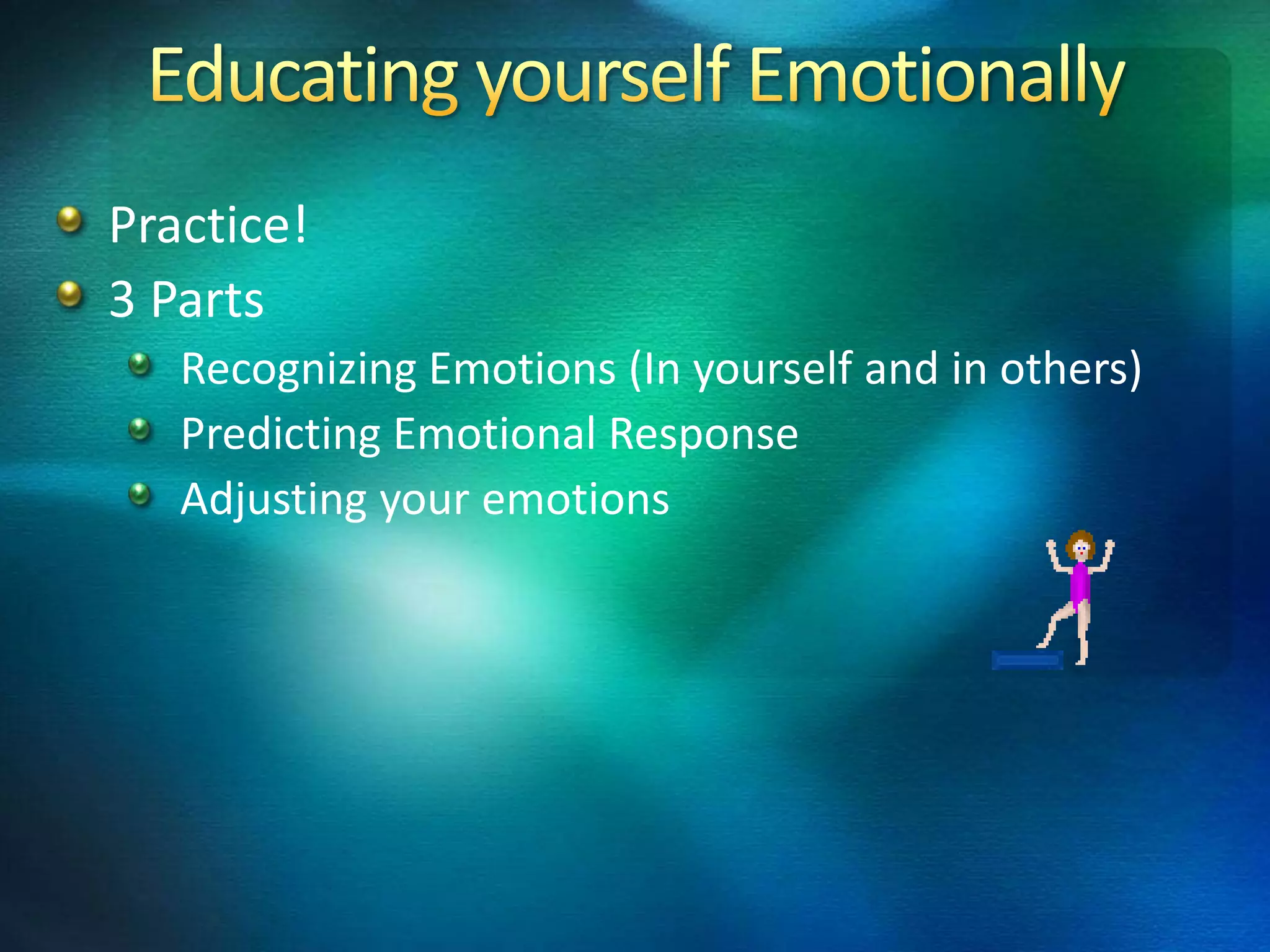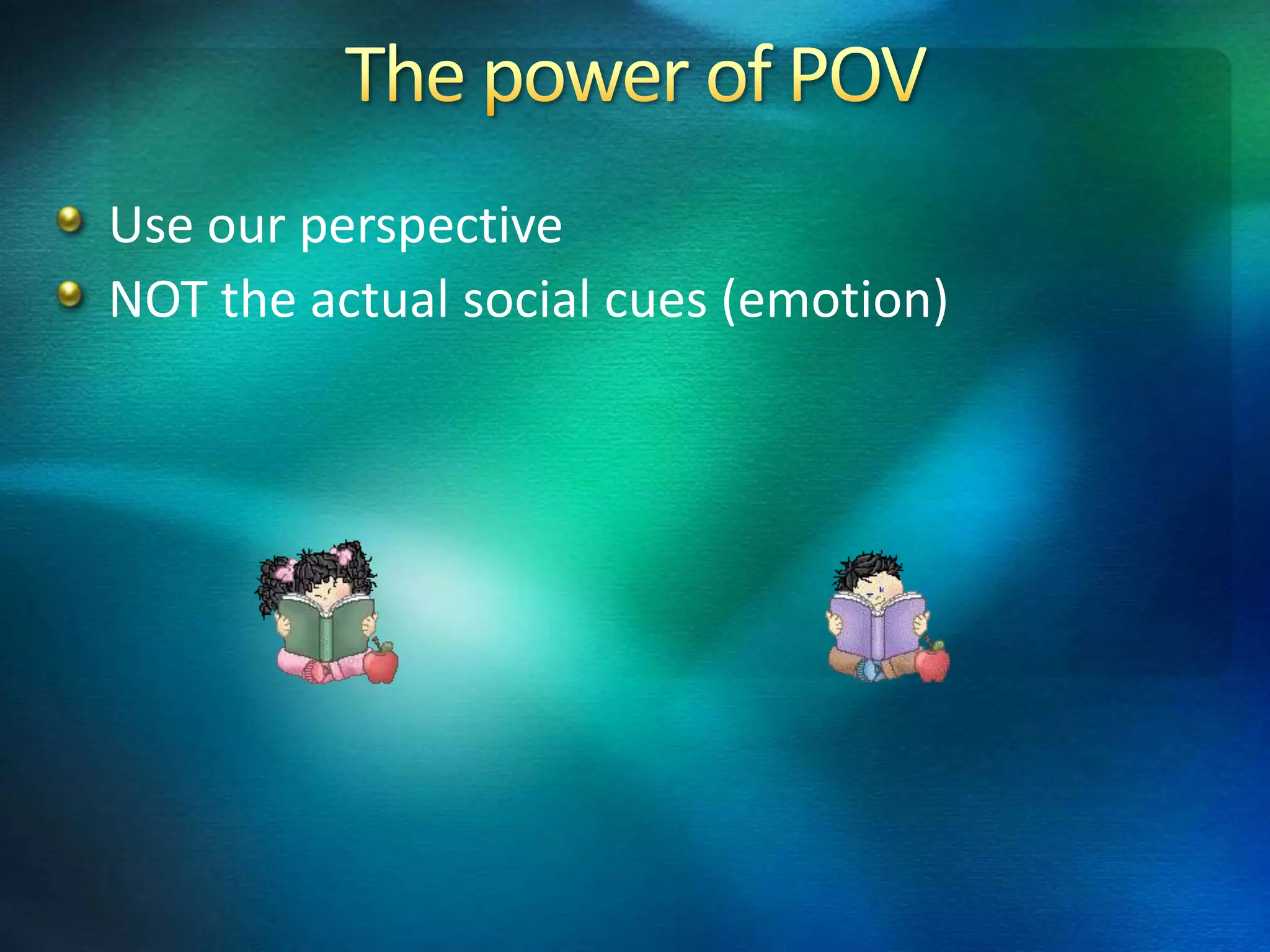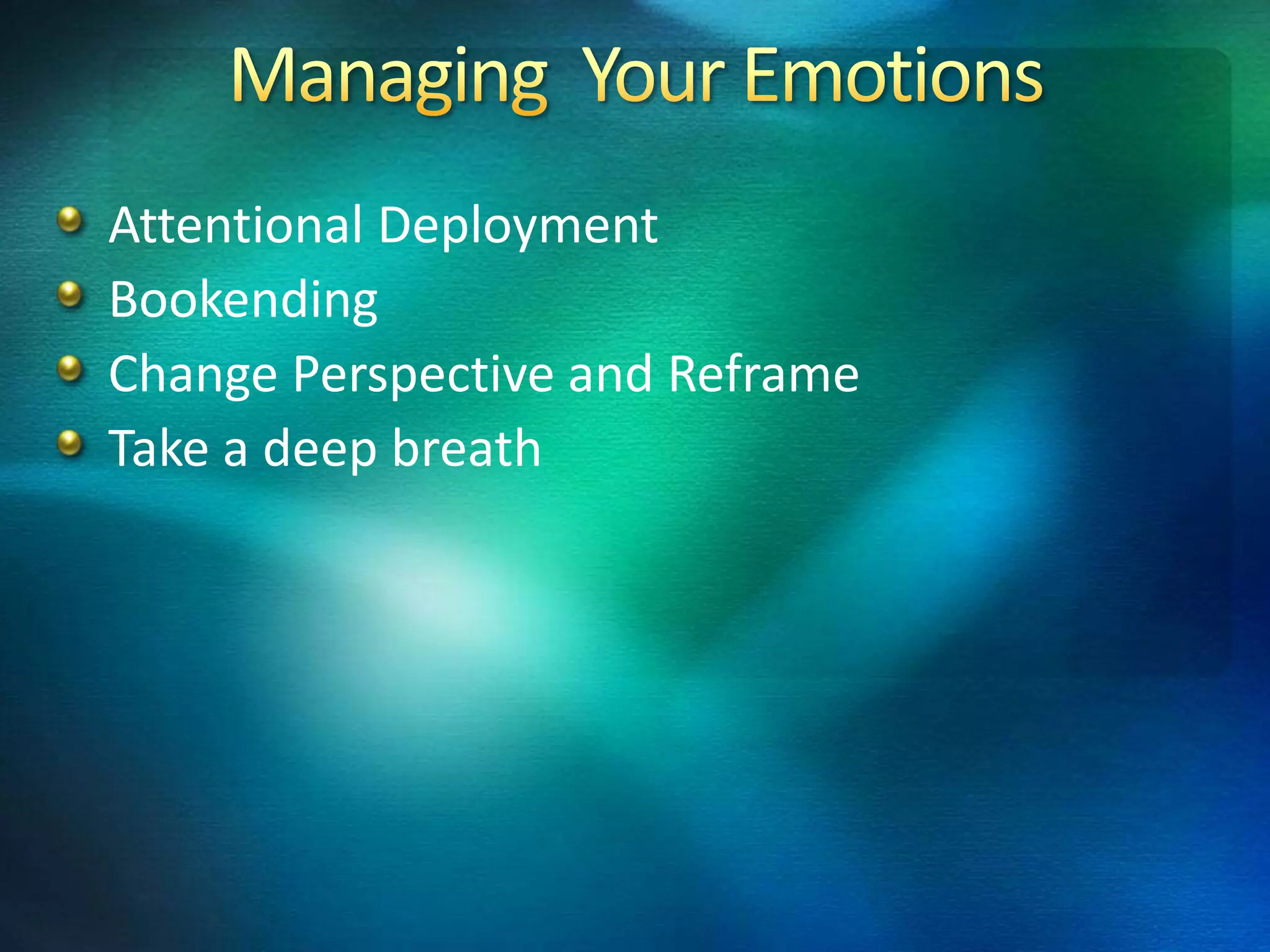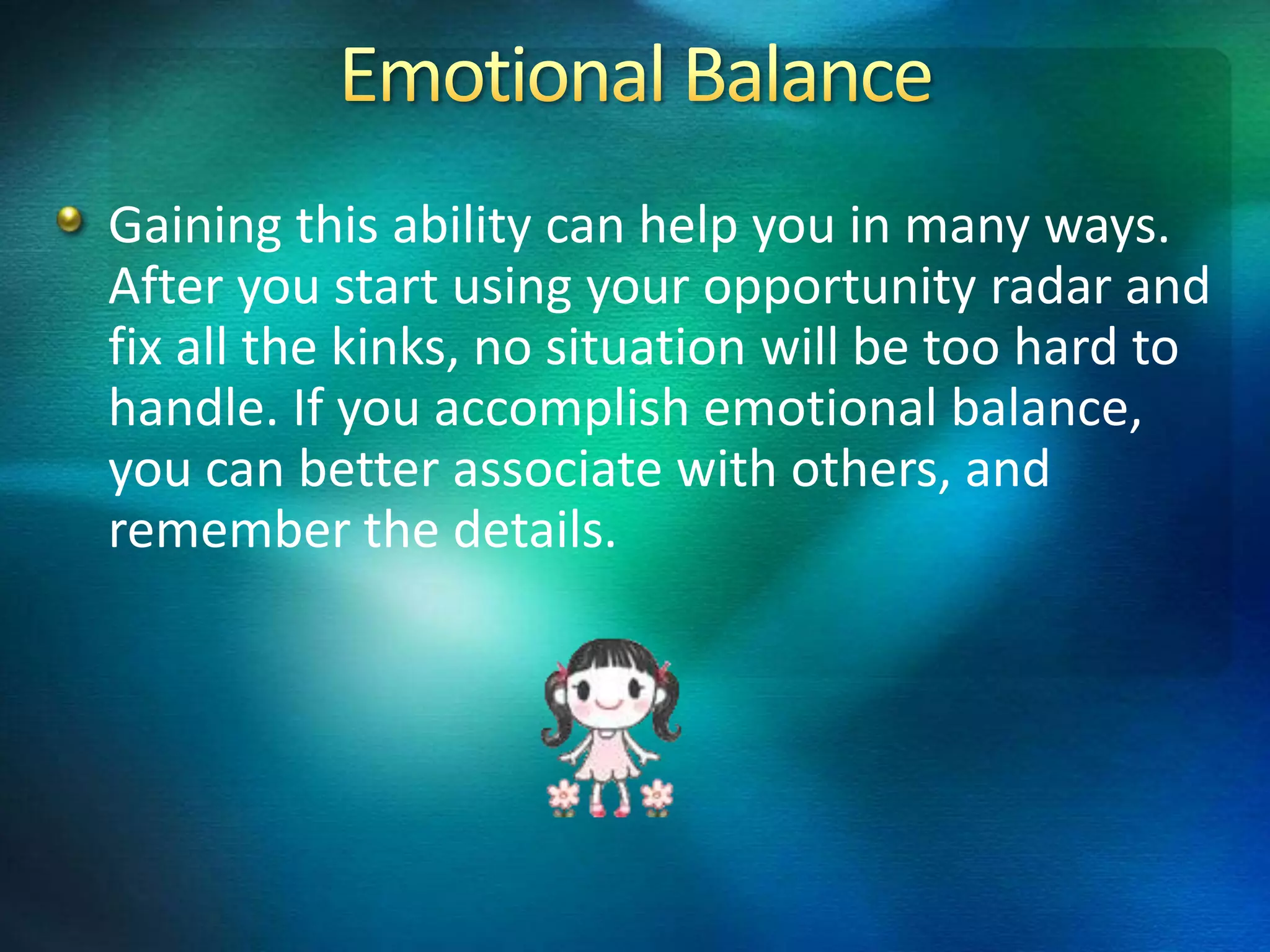The document discusses the importance of understanding and managing emotions to improve interpersonal interactions and decision-making. It highlights techniques for recognizing and predicting emotional responses, as well as strategies like reframing perspectives and emotional balance. Achieving emotional control can enhance connections with others and facilitate handling challenging situations.
